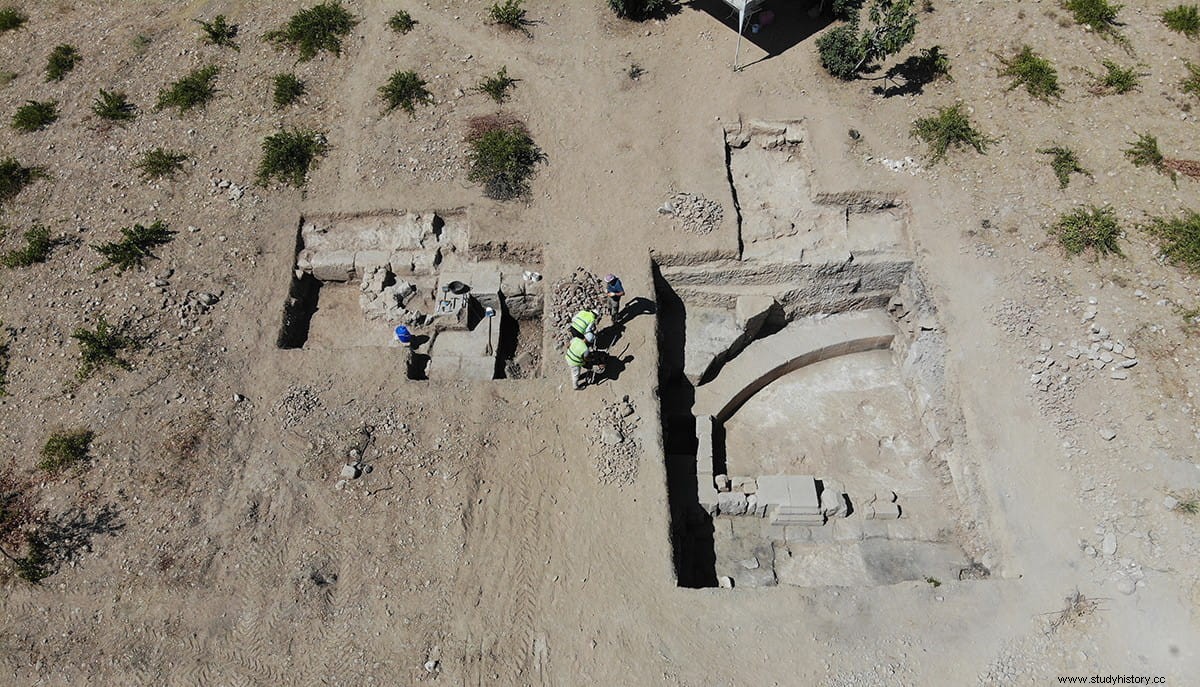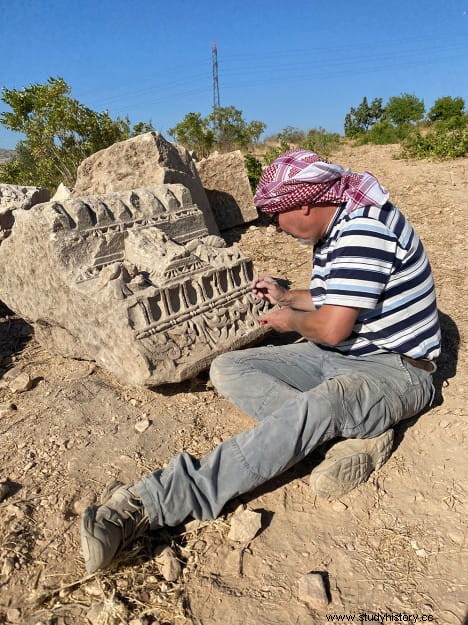Last summer archaeologists from the University of Münster discovered a hitherto unknown Roman-era sanctuary during excavation work in the ancient city of Doliche in southeastern Turkey (present-day Dülük). Over nine weeks, the team - led by Professor Engelbert Winter and Professor Michael Blömer from the Asia Minor Research Center - discovered parts of a large temple that stand out not only for their size, but also for their unusual shape. The find is of great importance for understanding the development of temple architecture in ancient Middle East.
Before the excavations began, there was little evidence of the existence of a large ancient building at this location. There were no recognizable traces of ancient architecture in the gently sloping, vine-covered countryside. However, even before the campaign began, measurements made by ground-penetrating radar - which makes underground structures visible - had provided indications of sections of wall hidden below the surface. Their dimensions also revealed that they were part of the public space of the ancient city. Excavations confirmed the researchers' suspicions.

From what has been ascertained so far, in the center of the field there is a temple oriented from east to west with a width of about 35 meters. On the west side, its interior ends with an apse, a semicircular space, about twelve meters wide. The laterally adjacent areas have not yet been fully examined. The researchers assume that these are small side rooms that would be accessed from the apse.
Despite the high degree of destruction due to use and subsequent looting, the remains discovered give a good impression of its monumentality , affirms the director of the excavation, Engelbert Winter. In addition, numerous fragments of capitals and beams of considerable size already allow us to reconstruct the structure of the building with great precision .

The Münster researchers say that the study of the temple is still at an early stage. However, what is already becoming clear to archaeologists after the first evaluations is that the temple differs from the usual temple buildings in the eastern Mediterranean by the unconventional design of its interior, with a large apse. However, he is not the only one. There are parallels in Palmyra and in southern Syria.
Ultimately, the building promises to provide new insights into the development of temple architecture in ancient Syria says Michael Blömer. The team does not yet know who was worshiped at this newly discovered temple. For this, it will be necessary to continue investigating in the coming years. In the opinion of the researchers, however, it is possible that it is a place of worship for a Roman emperor.
The discovery underlines the fact that Doliche is a place where religious developments in the ancient Middle East can be studied particularly well:In the past, the Münster team has already discovered the sanctuary of Jupiter Dolichenus on the outskirts of the city, an underground sanctuary of the god Mithras and a large early Christian basilica dating from the fourth century AD.
Excavation work at Doliche has been carried out for 25 years under the direction of Professor Engelbert Winter, in cooperation with the Turkish ancient monuments authorities. This year, an international group of 43 scientists and students, as well as 25 excavation assistants, participated in the work in Turkey.
